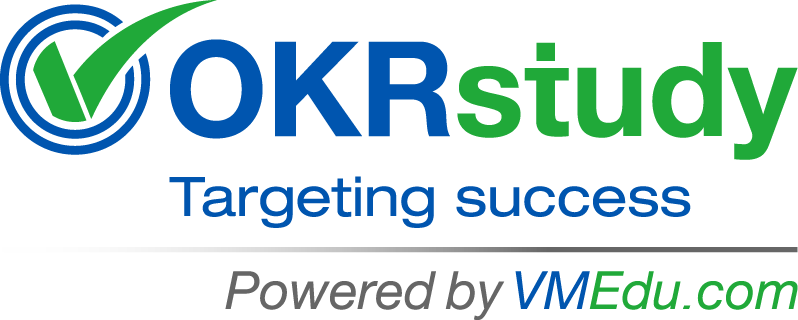An OKR Retrospective is a critical review meeting or process that occurs at the end of an OKR cycle (typically quarterly or annually) where teams reflect on their performance, learn from both successes and challenges, and identify areas of improvement for the next OKR cycle. It is an opportunity to assess whether OKRs were successfully achieved, understand why certain key results were not met, and adjust the process to ensure greater success in future cycles.
Here are the key details of an OKR retrospective:
1. Objective of the Retrospective
- Review and Reflection: The main goal is to reflect on the performance of the OKRs, discuss what went well and what didn’t, and gather insights for continuous improvement.
- Actionable Improvements: Identify changes in strategy, process, or execution that can be implemented in the next OKR cycle.
2. Key Components of an OKR Retrospective
A. Review of OKRs- Objective and Key Results Summary: Recap the OKRs that were set for the cycle, and present their final outcomes.
- Successes: Celebrate the key results that were achieved or exceeded, recognizing teams or individuals who contributed to those successes.
- Challenges: Discuss the key results that weren’t met, and explore the reasons why. Was it due to unclear objectives, lack of resources, unrealistic targets, or something else?
- Quantitative Review: Measure the actual results against the targets (e.g., percentage completion of key results, actual performance vs. goal metrics).
- Qualitative Feedback: Gather feedback from stakeholders or team members about their experience with the OKRs (e.g., was the objective motivating, were the key results clear and actionable?).
- What Went Well: Identify practices, strategies, and behaviors that helped achieve OKRs (e.g., effective collaboration, clear communication, great focus on key priorities).
- What Didn’t Go Well: Examine what could have been improved. Were there any missed opportunities, obstacles, or inefficiencies (e.g., unclear key results, insufficient resources, lack of focus, misalignment across teams)?
- Key Learnings: Discuss any significant insights from the OKR cycle. For instance, did certain strategies, tools, or behaviors help achieve progress? Were there any recurring roadblocks?
- Identify Underlying Causes: Analyze the reasons why some OKRs were not achieved or fell behind. This could involve looking at resources, prioritization, stakeholder involvement, or external factors.
- Focus on Systemic Issues: Rather than focusing solely on individual mistakes, look for broader patterns or systemic issues that might have contributed to success or failure.
-
Process Improvements: Identify adjustments or changes that can be made to the OKR process itself. For example:
- Refining the way objectives are defined.
- Ensuring that key results are measurable and achievable.
- Improving how teams are aligned to OKRs.
-
Behavioral or Strategic Changes: Any changes to the team's approach to achieving OKRs. For example:
- Setting more realistic key results.
- Improving cross-functional collaboration.
- Enhancing communication and feedback loops.
3. OKR Retrospective Frameworks and Activities
-
Start, Stop, Continue:
- Start: What new practices or processes should be introduced in the next OKR cycle?
- Stop: What practices should be stopped because they weren’t helpful or caused problems?
- Continue: What practices or behaviors should be continued because they worked well?
-
The 5 Whys: This technique helps identify the root cause of problems by asking "why" five times (or until you reach the core issue). For example:
- Why was the NPS score improvement slower than expected?
- Because customer feedback was delayed.
- Why was customer feedback delayed?
- Because the survey process was too slow.
- And so on, until the root cause is uncovered.
-
Plus/Delta: A simple method for gathering feedback.
- Plus: What went well during the OKR cycle?
- Delta: What could be improved?
- Feedback Loops: Collect qualitative feedback from the team members about the OKR process itself. What could be done differently in terms of clarity, communication, or focus?
4. Facilitating the Retrospective
- Facilitator: A neutral party (often someone from HR, operations, or an external consultant) can guide the conversation, ensure everyone has a voice, and keep the discussion productive.
- Team Participation: All team members, including leadership, should be involved in the retrospective to ensure diverse perspectives are captured.
- Safe Environment: Create a safe environment where team members feel comfortable sharing honest feedback without fear of blame or judgment.
5. Documenting and Communicating Results
- Document Key Insights: Write down the main takeaways from the retrospective, focusing on lessons learned, process improvements, and new actions to implement.
- Action Plan for Next Cycle: Create a concrete action plan that includes changes to be made for the next OKR cycle, addressing the issues identified.
- Share Findings: Communicate the findings of the retrospective with relevant stakeholders, such as leadership teams, and other departments, to ensure transparency and accountability.
Example of an OKR Retrospective Summary
Objective: Improve Customer Retention (Q4 2025)Key Results:
- Increase repeat purchases by 20% - Achieved 15%
- Launch loyalty program - Completed (Launched late in the quarter)
- Reduce churn rate by 10% - Achieved 5%
- The launch of the loyalty program was well-received by customers, even though it was delayed.
- Teams were highly collaborative in addressing early churn issues.
- The churn rate reduction target was too ambitious given the seasonality of the business.
- The team didn’t fully anticipate delays in the loyalty program rollout.
- The loyalty program launch was delayed due to insufficient coordination between marketing and tech teams.
- The churn reduction efforts weren’t aligned with the seasonality data, which impacted results.
- Align marketing and tech teams earlier to prevent future delays.
- Set more realistic and seasonally adjusted targets for churn reduction in future cycles.
- Improve cross-departmental planning for product launches.
- Set a more data-driven target for churn reduction based on historical trends.
